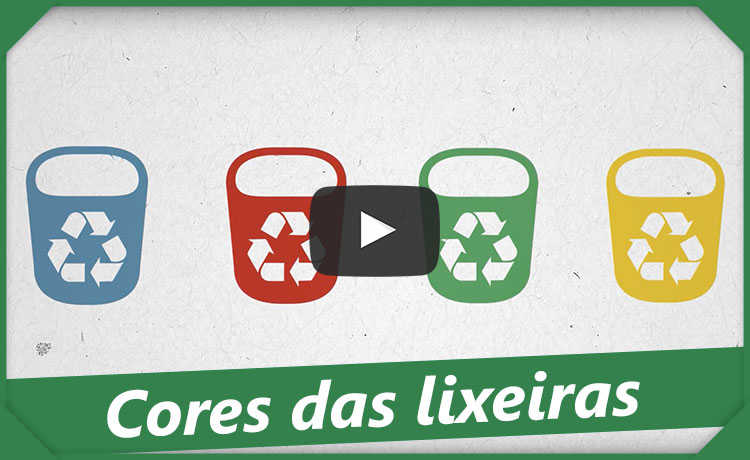Water uses: types and factors that influence demand
Know the types of water use and what factors influence demand

Image: Kerem Karaarslan on Unsplash
Everyone knows the importance of water for life on Earth and the need for its preservation. But have you ever wondered what the existing water uses are? Knowing them can be very important for conscientious water consumption.
Types of water use are classified into two large groups: consumptive uses and non-consumptive uses.
Consumptive uses are those uses of water in which there is a loss between what is removed from the water body and what is returned to it, such as in domestic and industrial supplies, irrigation and public cleaning.
On the other hand, non-consumptive water uses are those in which there is no need to withdraw water from its place of origin, such as for energy generation, transport and navigation, leisure and fish farming, for example.
Consumptive water uses
Agricultural production is responsible for the use of 69% of the fresh water available worldwide for supply. The industrial sector, in second place, is responsible for the use of 21% of it and the domestic sector comes in last, with 10%.
Of the 2.5% of fresh water on the planet, around 15% is in Brazil. Regarding the water availability of countries, the United Nations (UN) has the following classification:
Abundant
- Water availability of more than 20,000 cubic meters (m³) per inhabitant per year.
correct
- Water availability between 2,500 m³ and 20,000 m³ per inhabitant per year.
Poor
- Water availability between 1,500 m³ and 2,500 m³ per inhabitant per year.
review
- Water availability of less than 1,500 m³ per inhabitant per year.
Water availability and distribution across the planet are strongly influenced by climate, and they can fluctuate between seasons and between consecutive years.
Did you know?
- 20% of the world population live in semi-arid regions.
- 44% of the precipitation is accessible through reservoirs and dams.
- The average annual precipitation on the planet is 900 mm, with 1 mm of rain being equivalent to 1 liter of precipitation that accumulates in 1 m².
- 1/3 of the world's precipitation is found in South America and the Caribbean.
- North African countries have 100 mm of annual rainfall. The smallest recorded, despite its higher rate of evaporation.
Domestic water use
A person's daily average consumption (per capita consumption) is calculated as the total water consumption within a municipality, state or country, divided by the total number of people supplied in that same area. For almost 1 billion people in the world, who live more than a kilometer from a water source, the average use of water is less than 5 liters per day. In Europe, on the other hand, the average water consumption in most countries ranges from 200 to 300 liters per person per day. In Brazil, the average consumption is around 154 liters per day per person.On average, the domestic use of water in Brazil is divided as follows:

Graphic source: Characterization, treatment and reuse of gray water and rainwater in buildings - May, S
Some factors can affect water consumption in a city. Generally speaking, these factors can be your size; the population growth rate; the characteristics of the city (tourist, commercial, industrial); the types and quantities of industries present; the climate, habits and socioeconomic status of the population. There are also other factors, these more specific, such as water quality and its cost (rate value); the availability of the resource; the pressure on the distribution network, and the occurrence of rain.
Population growth
Experiences have shown that the increase in population leads to an increase in per capita consumption. This can be attributed to an increase in commercial and industrial demand, in addition to greater possibilities of losses in the distribution network, for example.
nature of the city
A tourist city certainly does not have the same level of water consumption per capita as an industrial city. Industrial cities stand out as those with the highest average consumption, due to the high consumption of water from industries.
Groups that are mostly residential are the ones with lower consumption, as there is no need for a complementary demand to that of households to carry out any professional activity related to water consumption.
Climate
The hotter the region, the greater the consumption. In general, the values of average daily consumption per capita can fluctuate, ranging from 150 liters for a semi-cold and humid climate, to 300 liters for a very dry tropical climate.
pressure on the network
When the appliances and faucets in an installation are supplied by a very high pressure public network, the average consumption increases thanks to the higher flow rate, even with a small opening of the valves and faucets.
virtual water
According to the Basic Sanitation Company of the State of São Paulo (Sabesp), virtual water is the amount of water used to produce a good, product or service. It is embedded in the product, not only in the visible, physical sense, but also in the "virtual" sense (hence its name). It is the measurement of water considered necessary for production processes - it is, therefore, an indirect measure of the water resources consumed by a good.
In agriculture, only 17% of crops are irrigated, but they are responsible for around 40% of food production - and a lot of water is dispensed in this production. Below are the values of how many liters of water are needed to produce 1 kg of each of these foods:
- Potato: 500 L
- Corn: 1,180 L
- Chicken meat: 3,500
- Beef: 17,500 L
- Beans: 340 L
- Rice: 2,500 L
- Wheat: 500-4,000 L
- Soybeans: 1650 L

For the industrial sector, 1 liter of water used generates an income 70 times more valuable than the same liter used in agriculture. See below the products generated in industrial processes and how much virtual water is dispensed in them:
- 1 L of gasoline: 10 L of water
- 1 kg of paper: 324 L of water
- 1 kg of steel: 235 L of water
- 1 car: 380,000 L of water
Water consumption tends to increase as countries industrialize, resulting in higher emissions of various pollutants, such as particulate matter, persistent organic pollutants (including PCBs), hydrocarbons and solvents.
Pollution
In addition to the fact that 1/6 of the world's population does not have access to safe drinking water, 2/6 of them lack basic sanitation. The pollution of water courses can result, for man, in waterborne diseases, which represent about 80% of the diseases diagnosed in human beings. Some examples of these diseases are amoebiasis, giardiasis, infectious hepatitis, cholera and verminosis such as schistosomiasis, ascariasis and taeniasis. Contamination by pathogens, organics and toxic heavy metals make 1 billion people sick annually due to waterborne diseases, resulting in 35 thousand daily deaths (13 million/year).
Wetlands and the Ramsar Convention
The Ramsar Convention is an intergovernmental treaty that was signed in Iran in 1971, marking a time of growing concern for the conservation of aquatic environments and the beginning of national and international actions towards the recognition of ecological importance in addition to socioeconomic, cultural and scientific research in these areas.
The concept "wetlands" arose with this convention to refer not only to natural wet environments, but also to artificial ones, ranging from seas and lakes to dams and weirs. Initially, only natural humid environments were considered, as the original objective of the Ramsar Convention was the preservation of environments used by migratory birds.
Currently, we can define wetlands as interface ecosystems between terrestrial and aquatic environments, continental or coastal, natural or artificial, which are permanently or periodically flooded by shallow waters or with waterlogged soils. Wetland waters can be fresh, brackish or salty, and have plant and animal communities adapted to their dynamics.
February 2nd is considered World Wetlands Day; date that marks the adoption of the Ramsar Convention, in 1971. The UN also established World Water Day, celebrated on March 22nd.
In addition to being part of the convention, Brazil also has the National Water Resources Policy (Law No. 9.433/1997), which institutes the National Water Resources Plan (PNRH) to guide water management in the country.
Water stress versus water scarcity
Hydrology specialists characterize the terms water stress and scarcity by the population-water ratio.
It can be said that an area is at a time of water stress when the annual water supply is less than 1,700 m³ per person. If this supply is less than 1000 m³, the population suffers from water shortages. With an annual supply of 500 m³ per person, the term "absolute scarcity" is already used.
What to do?
global scope
Through Rational Use Manuals, the Ramsar Convention has developed a series of guidelines to show that it is possible to integrate wetlands into water management processes . The main challenge is to incorporate the convention's guidelines into national laws, ensuring that water management is always taken into account, whether in social, economic or environmental activities.
regional scope
Decision-making regarding the conscientious management of wetlands must not harm the livelihoods or well-being of the population. For this, policies that integrate population and environmental needs are needed, including initiatives such as Integrated Water Resources Management, whose global objective is to satisfy the water needs of all countries for their sustainable development.
local scope
Take responsibility! Local activities of recycling, reuse, conservation and conscientious consumption of water are very important, being the basis for a sustainable management of this resource. Reducing water consumption and household activities such as rainwater harvesting are great ways to contribute to wetland conservation.










